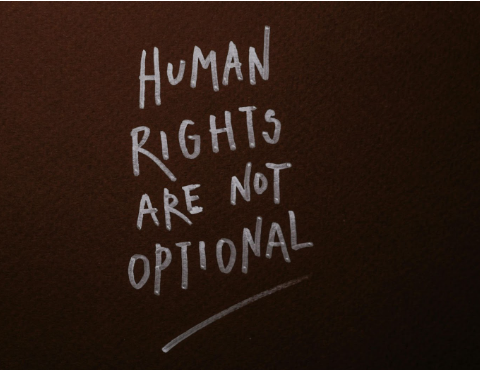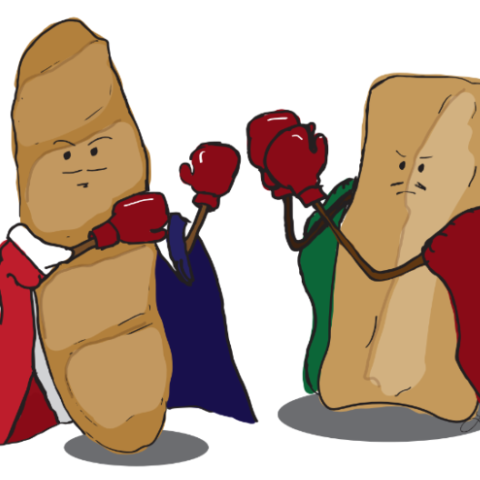By: Andrew Peoples

Source: Cartoon Network Studios
The show has won commercial success, widespread critical acclaim, and three Emmy Awards. Exploring themes ranging from moral philosophy to gender identity to the certainty and nature of death, it has attracted millions of dedicated fans with its brilliant writing and diverse cast of characters. No, it’s not an HBO drama or Netflix original series. The program in question is Adventure Time, currently Cartoon Network’s top show among nine to 14-year-olds, and an increasingly recognized cultural phenomenon.
On the surface, Adventure Time is a children’s show about a boy named Finn and his talking dog Jake. The basic premise lacks anything particularly original about it: two heroes go on adventures and battle an evil ice king in a whimsical, Oz-like world. Pendleton Ward, the creator of the show, admitted to initially designing the main characters of the show as intentional clichés in order to get the show picked up by a network. But you need only watch a couple of episodes to realize that Ward’s colorful creation is no ordinary children’s cartoon. To say that the show is written on multiple levels might be a discredit to its sophistication—an adult viewer wonders if Adventure Time is written for children at all. Adult themes are a constant on the show, as characters reference relationship problems and “mating,” and continually threaten and try to kill one another. What really might go over the heads of some young viewers and gives Adventure Time its great value, however, is the complexity with which some of those nominally clichéd characters are drawn.
Consider the villain. The main antagonist, the Ice King, manages to simultaneously be the most repulsive and sympathetic creature in “Ooo,” the land in which the show takes place. Flying from his lair in the frozen mountains, he kidnaps princesses and threatens constantly to kill Finn and Jake. His behavior, however, all stems from his inescapable loneliness and inability to find a wife or make any friends. “I identify more with him than any other character,” says Ward of the Ice King, who acts out the role of a wife to show his pet penguins what having one would be like, and even writes fan fiction about the other characters to assuage his feeling of desperate isolation.
The refreshing, unfailing optimism of the two protagonists features prominently in the show’s appeal as well. “Jake the dog and Finn the human,” as the show’s opening theme refers to the heroes of Adventure Time, often fall short of their goals, and their constant mistakes and screw-ups cause episodes to end without a neat resolution as often as with one. The idealistic Finn and somewhat more cynical but also wiser Jake are far from infallible, prone to great stupidity, laziness, and thick-headedness (Jake calls himself “lazy but prideful”). But even when Finn and Jake are clearly outmatched, they remain brave and well-meaning, and filled with childlike senses of resilience and wonder, which keep them confident in their cause.
Finn and Jake need to stay optimistic to live in a world that is far more morally ambiguous than most children’s stories. A great part of the appeal to adult viewers is Adventure Time’s postmodern attitude toward moral messages, which tends to make them idiotic, contradictory, or leave them out altogether. A typical example comes from the fourth episode of the series, in which an older character spends the entire episode proving that anyone can have what it takes to be a hero, only to explode as a result of finally completing her quest. Darker themes such as this underlie most of the series’ episodes, and range from the macabre (“Finally we can die!” cries a group of balloons to Finn after he releases them from their “blood oath”) to the philosophical (“Why, creator? Does it please you to watch me struggle?” asks a newly sentient robot designed to throw pies). The subject of death is a constant presence on Adventure Time, hovering like a shadow around the edges of brightly colored Ooo. “I am constantly thinking about how death is always looming… I guess that’s where a lot of my humor comes from, too, is just thinking about that,” says creator Ward. Jack Pendarvis, one of the writers and producers of the show, jokes that the episode in which Jake confronts his own death shows “that’s what we’re really trying to do at Adventure Time… prepare people for their own death.”
The show treats its heavier subjects with a masterfully light touch, exploring them without ever making them feel too sad or oppressive. The sadness of reality is simply an underlying factor of life in Adventure Time. The land of Ooo itself epitomizes this, as a whimsical place filled with candy people and magic animals where occasionally Finn and Jake wander across a river of garbage or dilapidated highway underpass, revealing that their colorful world is built upon the ruins of ours. Despite the lighter touch given to these issues, Finn and Jake’s emotions are always realistic. The heroes respond to their surroundings the way people do in real life, feeling boredom when all their needs are met, anger when something is taken from them, and profound sadness when faced with loss. The attitudes of the characters on the show led Time Magazine to call Adventure Time “one of TV’s most emotionally real shows.”
Large swathes of the Internet are devoted to Adventure Time. From a wiki with over 2,100 pages and an unbelievable 30,000 illustrations to Pinterest boards, a subreddit, and countless works of fan fiction, the show has established a place of relevance in pop culture. Last year the Macy’s Thanksgiving Day Parade even welcomed a balloon of Finn and Jake, essentially announcing its arrival as a cultural force. This lighthearted yet dark, simple yet profound, thoroughly compelling show is here to stay in American culture, and America is better off for it.

